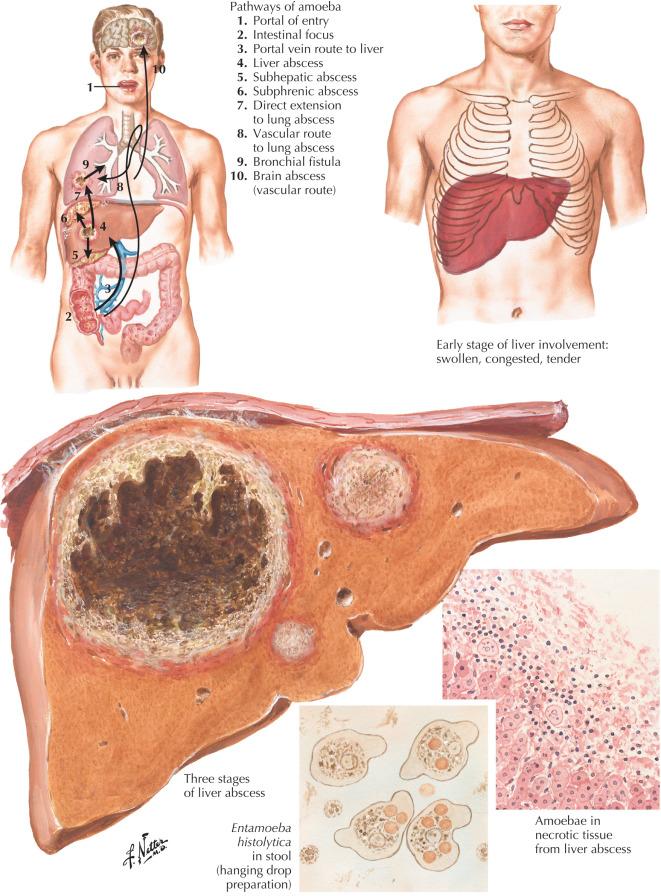Physical Address
304 North Cardinal St.
Dorchester Center, MA 02124
Amebiasis may be complicated by the development of an amebic liver abscess ( Fig. 179.1 ). Entamoeba histolytica (also known as E. histolytica ) represents the most common parasite identified in amebic liver abscess and is a commensal organism which can result in an invasive amebiasis associated with systemic illness, including fever, nausea, and diarrhea. Symptoms of amebic liver abscess include right upper quadrant pain, fever, nonproductive cough, anorexia, nausea, vomiting, and diarrhea. E. histolytica is transmitted primarily through feces in contaminated water and presumably enters the liver via the portal vein. Young men age 20 to 40 years are most often affected.

Amebic liver abscesses are most commonly solitary and found in the right lobe of the liver, although multiple lesions may be present. The initial diagnosis is typically established by ultrasonography or computed tomography, although it requires confirmation by antiamebic antibodies using indirect hemagglutination and enzyme-linked immunosorbent assays. Antibody test findings may be negative very early after initial infection but will remain positive for several months following infection.
The most serious complications of amebic abscesses include spread by rupture or fistulization into the chest, resulting in either pulmonary or hepatopulmonary abscess, hepatobronchial fistula, or hematogenous dissemination into the brain or other organ systems. Abdominal ultrasonography is generally adequate for the identification of amebic abscesses and reveals a hypoechoic lesion. Percutaneous aspiration should be considered if there is concern about rupture or spread to adjacent organs. Stool tests to detect E. histolytica may not be helpful because intestinal amebiasis may not be initially present in patients with an amebic liver abscess. Treatment with metronidazole or dehydroemetine is recommended, although tinidazole, ornidazole, and nitazoxanide may also be effective for amebic liver abscess. After the liver abscess is resolved, treatment for luminal infection is also recommended, even if the stool is negative for E. histolytica .
Become a Clinical Tree membership for Full access and enjoy Unlimited articles
If you are a member. Log in here